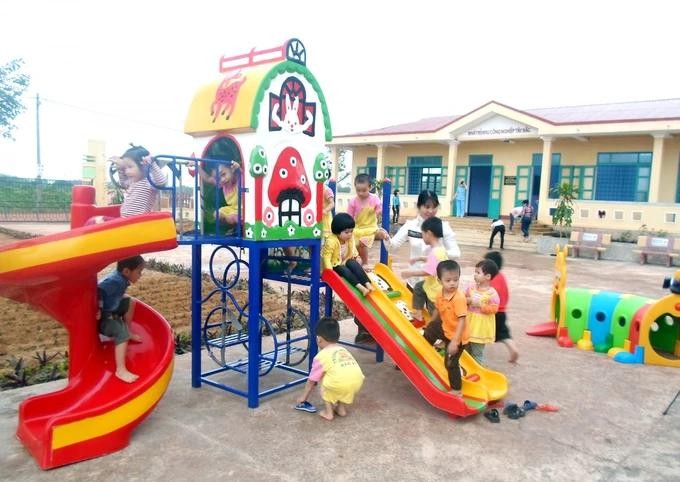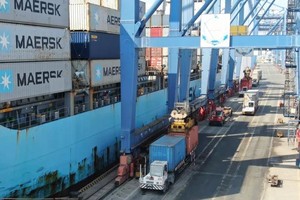
Many localities are home to industrial parks and export processing zones that provide employment for a significant number of workers; however, they encounter a severe lack of childcare facilities for their children.
In major urban centers such as Hanoi and Ho Chi Minh City, along with provinces that host numerous industrial parks like Dong Nai, Binh Duong, and Hai Phong, the absence of secure and accessible childcare options has created significant challenges for migrant workers.
In Ho Chi Minh City, merely 15 percent of the childcare requirements of workers are satisfied by public facilities. The remaining majority must depend on private institutions, which frequently charge tuition fees that are significantly higher. This situation poses a considerable financial strain on families with low incomes. Furthermore, the operating hours of public childcare facilities do not accommodate the overtime or shift work schedules of numerous employees.
Despite the presence of over 33 industrial parks in the Southern Province of Dong Nai, the number of public kindergartens remains severely limited, with only 6 built by local enterprises. As a result, most workers are forced to send their children back to their hometowns, relying on grandparents for childcare. This arrangement leads to emotional distance and challenges in family management.
At the VSIP Industrial Park located in the Northern City of Hai Phong, there are over 30,000 employees, with more than 65 percent being women. This demographic creates a significant demand for childcare services for children under the age of 36 months.
While some large companies have attempted to establish on-site kindergartens, the overall number remains low due to various challenges related to land availability and policy regulations. The necessity of providing childcare, along with the care and upbringing of children, not only impacts family dynamics but also exerts pressure on labor productivity and the mental well-being of workers, making it a critical issue that has persisted for many years.
To address this issue, Head Do Hong Van of the Women's Committee of the Vietnam General Confederation of Labor stated that the Vietnam Trade Union is in the process of formulating a draft initiative titled ‘Project to Support Workers in Industrial Parks and Export Processing Zones in Child Care and Raising’.
Assigned by the Vietnam General Confederation of Labor, the Women's Committee advises on and develops the content for this project. To collect feedback and finalize the draft, the Confederation recently held two workshops - one in Ho Chi Minh City and one in Hanoi.
The representative of the trade union organization in the Nghi Son Economic Zone in Thanh Hoa Province remarked on this draft, noting that female workers constitute 85 percent of the workforce. However, it is important to highlight that these workers typically engage in local migration, moving between districts rather than undertaking long-distance migration as seen in regions such as Binh Duong and Dong Nai.
The trade union organization in Nghi Son Economic Zone has developed a unique approach to supporting female workers who are raising children. In 2023, they established a model "pregnant and child-rearing club" to address the specific needs of this population. This innovative program has since been replicated in 7 enterprises with a large number of workers.
However, in light of the project's ambitious goals, the Thanh Hoa Provincial Trade Union representative underscored the significant hurdle of implementation costs. The trade union's existing financial commitments preclude the necessary funding for this specific project. Consequently, the Nghi Son Economic Zone Trade Union representative stressed the indispensable nature of higher-level trade union backing to facilitate grassroots execution.
Regarding this matter, Ms. Do Hong Van clarified that the Vietnam General Confederation of Labor does not allocate specific budgetary funds for project implementation in each locality. Instead, the project relies on the collective financial resources of the entire trade union system. Local authorities will determine the precise implementation approach based on their specific circumstances.
Vice President Nguyen Thi Thu Thuy of the Hai Phong City Labor Federation is concerned that the goal for each industrial park to have a kindergarten will be difficult for the city to achieve. The industrial parks lack available land, and even if a kindergarten could be built, there would be other challenges, such as staffing it with qualified teachers.
Similarly, Vice President Tran Thi Nguyet of the Southeast Economic Zone Trade Union (Nghe An) suggested that if this project is implemented, the State should support land funds to build kindergartens, similar to social housing. Because, in many old industrial parks, when they were built, they did not arrange and organize kindergartens for workers' children, new projects must be required to settle this requirement.
The workforce in industrial parks and export processing zones is largely composed of young, marginalized migrant workers who grapple with poor living conditions, excessive work hours, and precarious employment. Migrant worker families are often confined to shared housing, devoid of accessible childcare and educational amenities.
The economic constraints faced by low-income, migrant worker parents hinder their ability to provide quality education for their children. Many are forced to resort to private institutions, which may not guarantee adequate educational standards. This, combined with the heightened risk of child abuse and violence, underscores the urgent need for intervention.
























